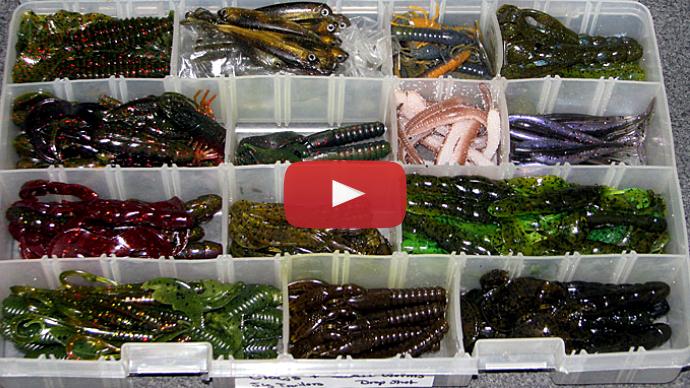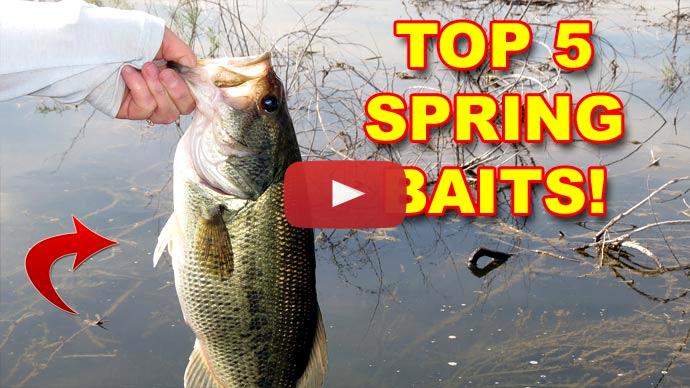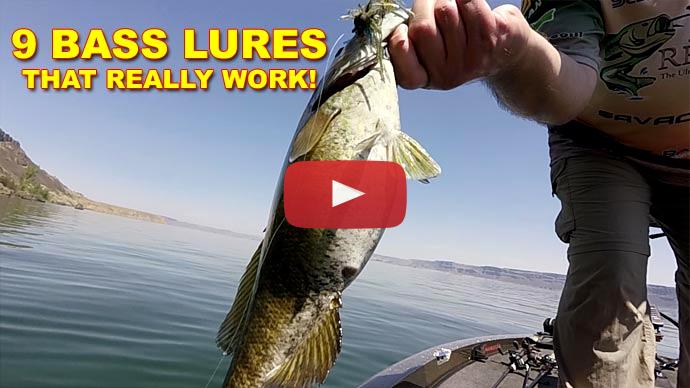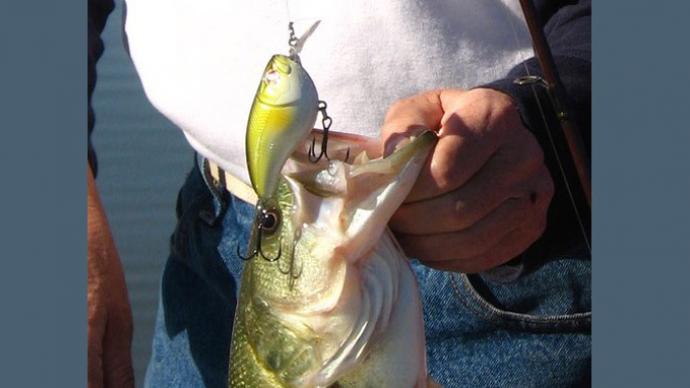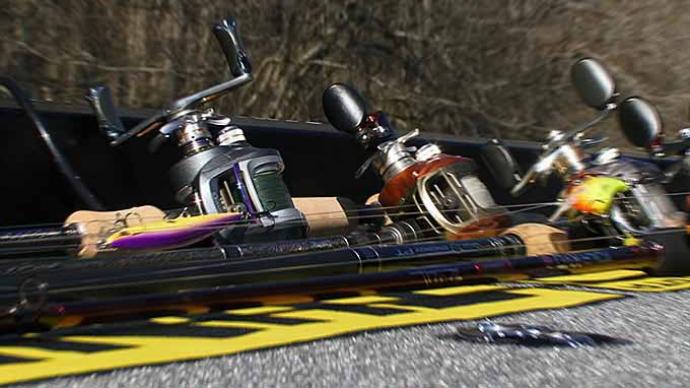Keri: What are your three tips for choosing color?
Greg Hackney: You know, always number one for picking...the number one choice for picking color would be what the forage species is. You know, are those fish eating crawfish, are they eating bluegill, are they eating shad? That's always number one. Number two is always water color. You know, if the water's...I typically pick my baits, you know, if it's darker water, I like darker colors and lighter water vice versa, lighter colors. And last would be weather, you know, because the deal is a green pumpkin may be the best choice when it's sunny and slick, but on a day that it's cloudy and rainy, black and blue may be a better choice.
Brent Ehrler: Yeah, green pumpkin when the water's clear, green pumpkin when the water's medium, and black and blue when it's dirty. So you really only need two colors. The only exception is Roboworms. When I get into a Roboworm it's gonna be several different colors, whether it's a Red Crawler or a Morning Dawn, you know, some sort of a green Aaron's Magic. That's the only one I'll change things up. When it comes to Yamamoto, there's only two colors: green pumpkin, black and blue. Just a straight black with a blue flake. That's all you need, just keep it simple. You don't need all the different colors out there. Believe me, there's plenty of colors that work amazing and if you like something, use it. It comes down to confidence. If you have confidence in it, that's what you're gonna catch the fish on, within reason. You just keep it simple and go with the greens or the blacks and the natural colors, you're gonna catch them.
Keri: Perfect. Now tell us your top three tips for color.
Jacob Wheeler: Colors. Now see, you know, traveling all over the country I feel like it's something that we constantly are trying to get an advantage and trying to throw something that maybe our other competitor is not. And, you know, I try to keep it very simple, I really do. I have a few of my little sneaky colors that I don't talk a whole lot about, but for the most part I'm really on three. You know, soft plastic colors, I'm blacks, I'm black blue, black sapphire. I'm either black, black blue black, black blue sapphire, green pumpkin, and then I throw something with a little flake in it like a sooner [SP] [inaudible 00:02:10] or a watermelon red. Those are the majority of my three. Another color that Gene Larew makes it's called Minnesota Flash. For clear water, it's a real dark watermelon with a little blue tint [SP] in it, those are pretty much the four that I'm gonna throw the majority of the time. Now if they're really keyed in on something, I might mess around with some dye, but those are those four that I'm definitely gonna utilize the majority of the time. You can throw other colors, you can throw something different, but at the end of the day if you find the fish, and finding the fish is more important sometimes than catching because once you go back there in the tournament, using those colors they're probably gonna bite it, but if they're eating on a bluegill or something, you can adjust it according.
Ott DeFoe: I've mentioned it two or three times, you know, bait colors for me, whether it's hard baits, jigs, soft baits, I carry five or six colors and I make it work all across the country. For me, I feel like action is most important. Size and profile is extremely important. Color matters, and I've seen times where I made a color change and it...I mean I started catching a lot more fish or stopped getting short strikes and got more fish to commit to the bait. So color does matter, don't think that it doesn't, but you don't have to count the flakes in your worm. The general hue, the general color definitely can matter, but, you know, as long as you carry some greens, some browns, some black and blue, you're gonna have the basics covered with that kind of stuff.
Brandon Palaniuk: Yup. And picking colors for me is really about water clarity, and a lot of people think that because you have dirty water that you wanna throw these great big bright colors, you know, white, chartreuse, and we do that with spinnerbaits and chatterbaits a lot because you're getting something that has a lot of vibration, and so it's all meshing together. But if you're flipping a jig like I talked about earlier, and you've got that kind of milky, dirty water, you actually need something that's gonna contrast against that, and then I'm gonna throw a lot of black, black and blue, black and purple, those kind of colors, that are gonna contrast well with that lighter color water. And as you get into the cleaner water, you want your green pumpkins, watermelons, things that are gonna blend and look more natural.
Keri: Sure. Thank you very much, Brandon.
Edwin Evers: Okay, color. You guys gotta remember we're imitating 3 things 99% of the time: shad, bluegills and crawdads, so always think about that when you're choosing colors. I don't care if a bass is in South Carolina, California, Texas, Minnesota, those are the 3 things that a bass eats 90% of the time. So really you can give me green pumpkin and black and blue and I could compete out here day in, day out. Yes, obviously there's some other hues off both of those that become important, but for me, the lighter...the clearer the water, the more transparent I want the bait to be. The darker, the muddier the water, the more solid the color I want it to be.
Keri: How do you choose lure color?
Skeet Reese: How do I choose lure color? Oh wow. It's based on water color, water temperature, season, but for the most part, if you look at all my boxes of Berkely baits, I simplify. I'm a 6 to 10 color guy. So as far as water color, how does the water color determine choosing a color? Well there...so here's...there's one rule of thumb I'll give you, there is no right and there is no wrong. Well, I shouldn't say there is no right, but there is no wrong color, so there's a lot of times that even fishing really muddy water where I catch them on green pumpkin, which blends with the water more than you say a black and blue, which would be a very commonly used color. But you get in a high pressure, post-front bluebird skies where that black and blue is just too bold, where you go to green pumpkin. So I can't tell you which color for which situation because there is no...there's no wrong color for any situation, it's just a matter of going through maybe trying a few different colors in the situation you're in.
Keri: Thank you, those are great tips. Everybody Keri May with BassResource.com. Come visit us!

